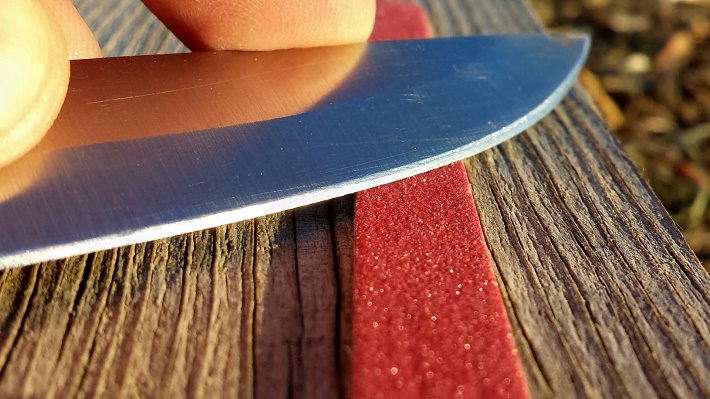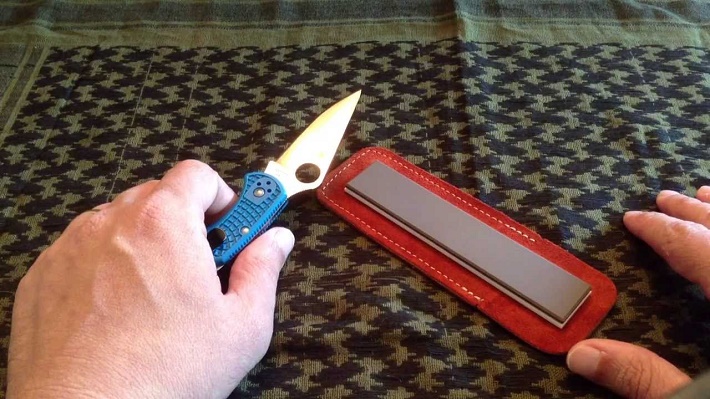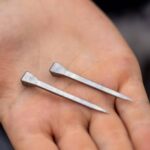The first time I tried sharpening my camping knife, I ended up completely messing up the edge and had to have a friend of mine who’s more experienced in the matter to fix it for me. I don’t mind that I messed it up because it was a pretty cheap, crappy knife anyway. But now that I’ve started meddling with better and more expensive knives that I actually care about because they’re essential for my camping trips, I really don’t want to ruin them.
That being said, if you ever use knife sharpeners on a good knife, make sure you get the angle right. But in order to do that, you must know what actually is the right angle. You’ll typically find this information on the manufacturer’s page, but if you can’t, worry not – I got you covered. Hunting knives, survival knives and pocket knives have an angle of 25-30 degrees, machetes 30-35 degrees, boning and other small knives 18-25 degrees, X-acto and razors 12-18 degrees.
There are various different types of knife sharpeners, but the most popular ones are sharpening stones. Sharpening stones can either be ceramic, whetstone or diamond. For beginners, whetstones are the most preferred choice, simply because they remove material slower than diamond and ceramic stones. In other words – they’re more forgiving. In order to get the best results, it’s important that you prepare the whetstone before you sharpen your knife.
For starters, clean the stone properly. Oil and shavings can cause it to dry rather quickly, so put it under water and scrub it nicely with an old toothbrush. Then, soak it in water again for about five minutes before you use it. Put it on a stable surface like a towel to prevent it from sliding, and then oil it up. The oil prevents heat and friction, both of which can warp the blade, and it also prevents the stone’s pores from getting clogged. Mineral oil is the most recommended oil for whetstones because it’s also food-safe.
One trick that has helped me immensely when sharpening my knives is the so-called sharpie trick. You draw a black line over the knife’s bevel with a permanent marker or a sharpie, and you take a few strokes with the knife over the sharpening stone. If you’ve got the right angle, the sharpie should be gone. Otherwise, there will still be a black mark on the bevel. If there’s still a black mark on the bottom but the top is clean, then you need to increase the angle. If there’s a mark on the top but the bottom is clean, then you need to lower the angle.





